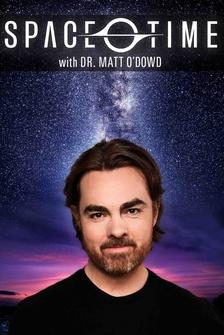- [Narrator] In the 1970s, it was meticulous observations gathered by an astronomer that forced scientists to confront the idea of dark matter.
- [Vera] Okay.
- [Narrator] The astronomer's name was Vera Rubin.
Despite having advanced degrees for over a decade, Rubin had never been able to collect her own data.
(pensive music) Astronomy had few women, and many observatories weren't welcoming.
Some officially did not allow women.
(suspenseful music) (device whirring) But the National Observatory at Kitt Peak had just recently opened and accepted her application.
She would return to Kitt Peak several times over her career as she began to focus more on galaxies.
- So this instrument behind me is the 84-inch telescope at Kitt Peak.
Vera Rubin started using it in 1968 when she started making measurements of the Andromeda Galaxy and looking at how different regions in Andromeda were moving.
(suspenseful music) - [Narrator] Rubin wanted to check a common assumption among astronomers about galaxies.
- The presumption was stars near the center of a galaxy would be orbiting very rapidly, and stars at the outside would be going very slowly.
(pensive music) - [Narrator] That idea came from the way the planets in our solar system orbit our massive sun.
(suspenseful music) Because the attractive force of the sun's gravity falls off with distance, the farther away from the sun a planet orbits, the slower its orbital speed.
(ethereal music) Astronomers assumed the stars in a galaxy would behave the same way, but no one had done the work to know for sure.
(pensive music) Partly, it was a technical issue, which Rubin solved by teaming up with instrument maker Kent Ford.
He had developed a device that enhanced a telescope's light sensitivity, making it possible to finally see the faint stars on the far edges of galaxies, and what they saw was surprising.
- They found that the regions of Andromeda that were quite far out were still rotating quite fast, faster than you would've expected by the amount of light that was there.
- [Narrator] It was a strange observation.
What was keeping those fast-moving outer stars from flying off?
During the 1970s, Rubin and Ford, along with other astronomers, gathered more and more data from more and more galaxies.
Almost none showed the speed of orbiting stars dropping as had been expected.
Still, it would take years for the astronomy community to accept the astonishing explanation that Rubin and others proposed.
(pensive music) That there was a vast amount of hidden matter surrounding each galaxy, gravitationally holding it together.
(pensive music) Aside from that effect, it was undetectable.
- If you didn't have some invisible mass in the galaxy, the stars would not be bound in this orbits, they would fly out.
(suspenseful music) - We now know that in every galaxy we study, the stars at very large distances are orbiting with very high velocities, and that tells us that there is a lot of matter at very large distances from the center.
So we see a lot of matter where we don't see very much light, and that has led to the concept of dark matter.
- [Narrator] It's been a striking transformation.
In the past 50 years, thanks to Vera Rubin and others, dark matter has become an essential scientific building block at the foundation of our understanding of the universe.
(uplifting music) (rocket engine roaring)














